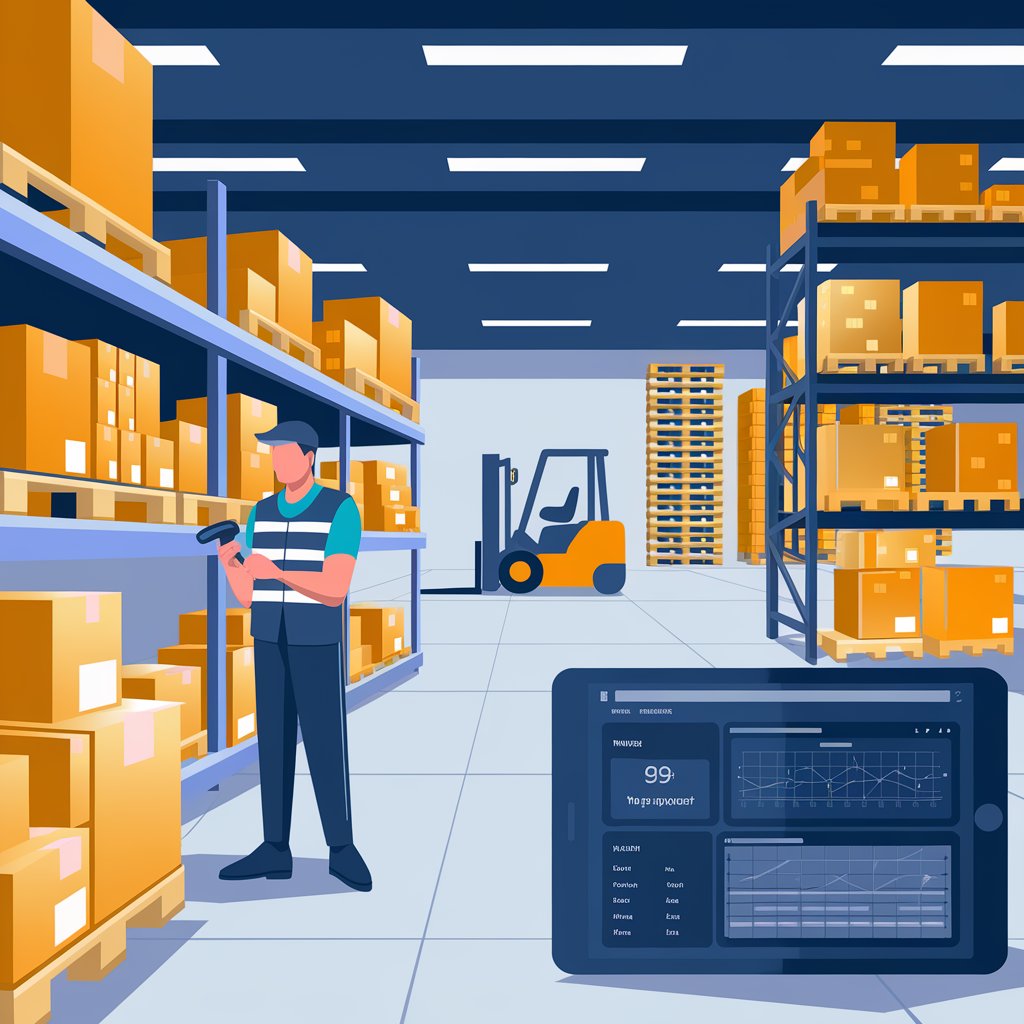Warehouse Management 101 for Logistics Companies
Whether you're a 3PL, freight forwarder, or logistics startup, understanding the basics of warehouse management can help you reduce costs, avoid delays, and grow smarter.

📦 What Is Warehouse Management?
Warehouse Management is the process of organizing, controlling, and optimizing the day-to-day operations inside a warehouse. This includes:
- Receiving and checking inbound shipments
- Storing goods in specific locations
- Picking and packing orders
- Managing inventory accuracy
- Preparing outbound shipments
- Keeping records and documentation
When done well, warehouse management ensures goods flow in and out efficiently, reducing time, errors, and costs.
🔍 Why It Matters for Logistics Companies
In logistics, warehousing is a core service—whether you’re offering short-term storage, cross-docking, or order fulfillment.
A good warehouse management process helps you:
- 📉 Reduce delays in shipping and delivery
- ✅ Avoid inventory errors and lost products
- 📊 Track product movement with clarity
- 🤝 Provide better service to your customers
- 💰 Cut operational costs and scale efficiently
As logistics businesses grow, manual tracking methods (like Excel) often become bottlenecks. That’s where Warehouse Management Systems (WMS) come into play.

🖥️ What Is a Warehouse Management System (WMS)?
A WMS is software that helps automate and optimize warehouse processes. It provides tools to:
- Assign storage locations
- Track stock levels in real time
- Print barcodes and scan items
- Create picking/packing lists
- Integrate with shipping or freight tools
- Generate reports and audit trails
WMS helps you move from reactive to data-driven, streamlined operations.
🧩 Key Components of Warehouse Management
Here are the building blocks of a successful warehouse setup:
✅ 1. Inbound Operations
Efficient receiving processes to ensure products are counted, labeled, and stored properly.
✅ 2. Inventory Control
Real-time inventory tracking ensures you know what’s in stock and where it is at any time.
✅ 3. Order Fulfillment
Includes picking, packing, and staging items for shipment, based on speed, accuracy, and priority.
✅ 4. Outbound Operations
Coordinating dispatch, labeling, and documentation for goods leaving the warehouse.
✅ 5. Reporting & Analytics
Track KPIs like stock turnover, order accuracy, and space utilization to improve continuously.

🔧 Best Practices for Warehouse Management
Whether you’re just starting out or scaling up, follow these tips:
- Use barcoding and scanners for accuracy
- Organize by location zones or product type
- Set reorder points to prevent stockouts
- Train your team on process consistency
- Review your warehouse layout regularly
Consider a WMS when spreadsheets aren’t enough
📚 Who Needs Warehouse Management?
Warehouse management isn’t just for big companies. It’s critical if you:
- Operate a distribution center
- Offer 3PL or fulfillment services
- Manage inventory for multiple clients
- Need to track and report stock movement
- Want to improve accuracy and speed

🎯 Final Thoughts
Warehouse management is no longer just about moving boxes—it’s about running smart, integrated logistics operations. By understanding the core concepts and tools, logistics companies of all sizes can improve efficiency, reduce errors, and provide better service.
Whether you’re new to warehousing or ready to upgrade your systems, this guide is your starting point for building a solid logistics foundation.
